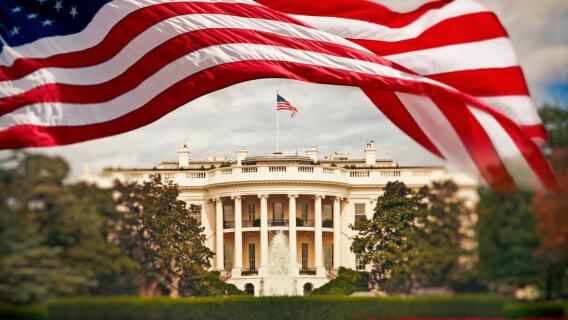Per tradition, Wall Street took the day off yesterday to honor the funeral of former President George H.W. Bush. The 41st President is remembered fondly by many, and that should include investors. Though Bush Senior was not re-elected for a second term, stock market performance during his four years in the White House was quite robust.
From the time of his inauguration in January 1989 until his exit in January 1993, the S&P 500 rose 47.5%, good for an average annual return of 11%. That’s good for fifth among all presidents since the benchmark index’s inception in 1957, more than twice the average annual return for a U.S. President (4.7%), and far better than the stock market performance under his son, George W. Bush; stocks fell 39.5% in his eight years at the helm.
Certainly, the market has thrived more under other U.S. Presidents, including his successor, Bill Clinton, whose 15.1% average annual return ranks second all-time behind Calvin Coolidge, whose whopping 26.1% annual return (as measured by the Dow Jones Industrial Average) during his five-and-a-half year stint in the Roaring ‘20s still sets the standard.




Barack Obama, by the way, ranks third in annualized S&P 500 returns at 13.8%. Donald Trump currently ranks ninth (9.9%), though he’s not even two years into his term.
Of course, context matters with stock market returns by president, and George H.W. Bush had some built-in advantages. He inherited a booming economy from his predecessor, Ronald Reagan, and respect for the Republican Party was arguably at its historical apex—a big reason why Bush was elected. Also, the geopolitical climate was calm—some might say hopeful and filled with possibility—what with the collapse of the Berlin Wall, the fall of the Soviet Union, and the freeing of Nelson Mandela.
It didn’t all last—peacetime ended (albeit briefly) with the Gulf War, and the U.S. economy fell into an eight-month recession less than two years into Bush’s term. Those were two big reasons why he wasn’t elected to a second term. Still, the strong stock market performance under the elder Bush suggests that his presidency was far from a disaster.
Stock market performance isn’t what determines how a U.S. President is remembered. But it’s a pretty decent measuring stick; it’s no coincidence that stocks under Herbert Hoover, who presided over the Great Depression and the accompanying 1929 Stock Market Crash, fell 35.6% per year during his tenure—the worst average annual return under a President by nearly 10-fold!
Conversely, Coolidge is revered for his role in propping up the economy prior to the Hoover disaster.
Historically (and depending on your politics), George H.W. Bush probably falls somewhere in between those two early-twentieth-century extremes. But judging by the outpouring of affection from all corners and both sides of the aisle in recent days, the elder Bush was as revered personally as any U.S. President.
It didn’t hurt that Wall Street liked him too.

Sign up now!

Sign up now!

Sign up now!

Sign up now!
